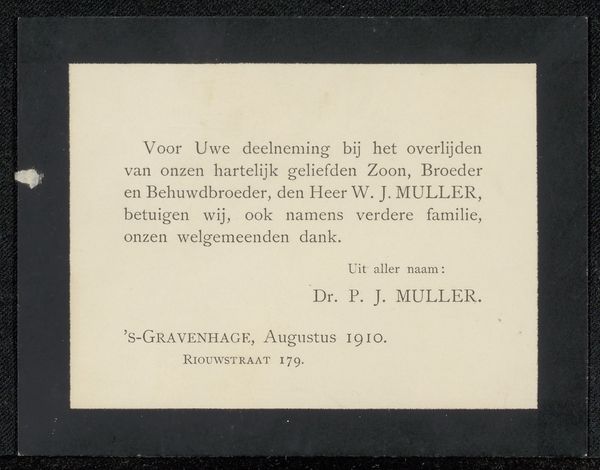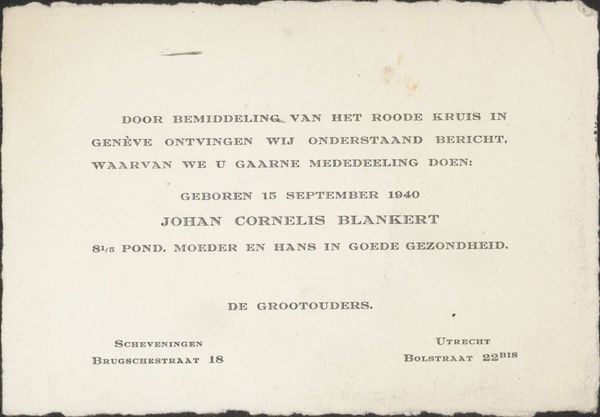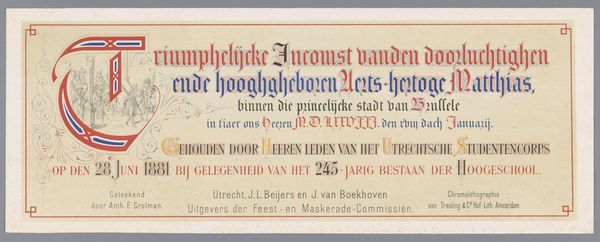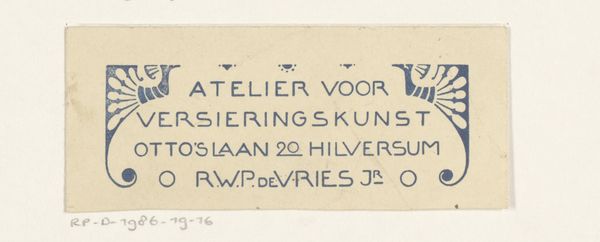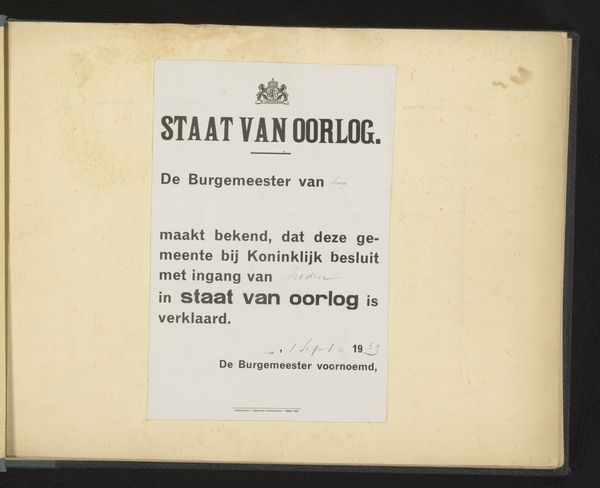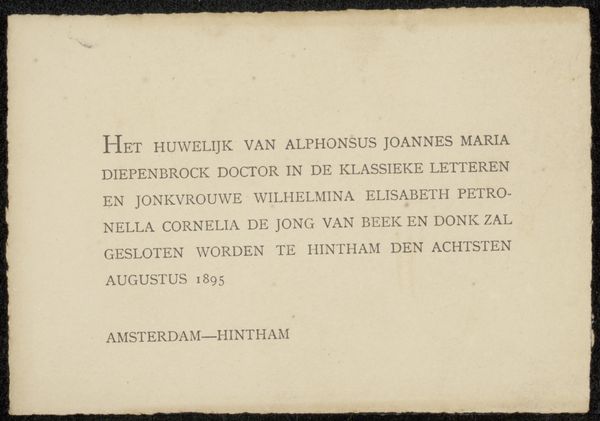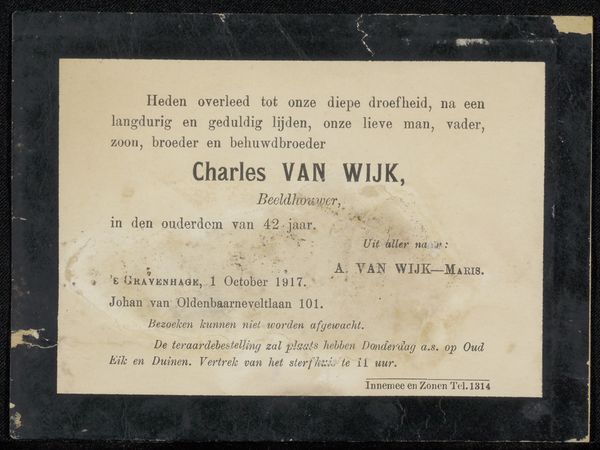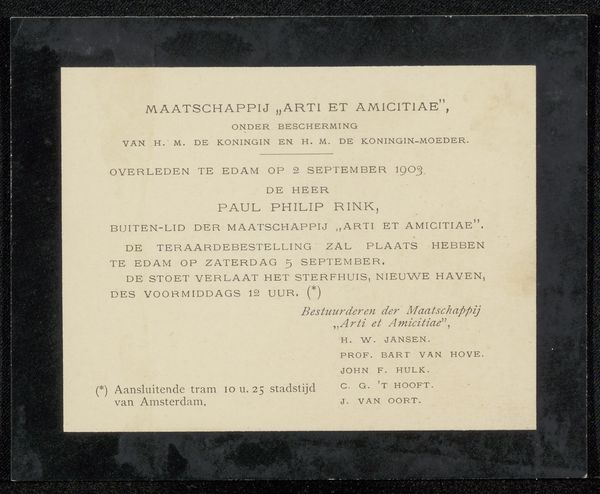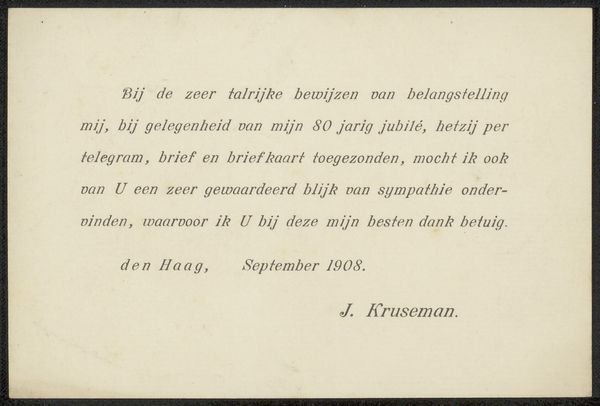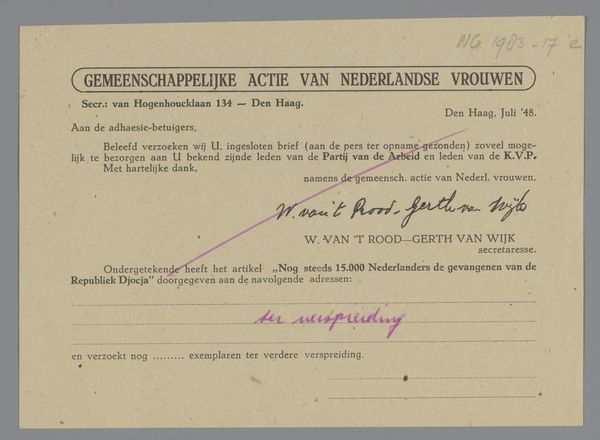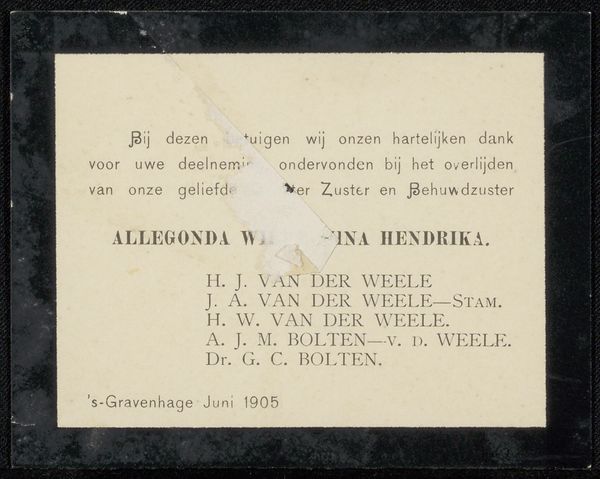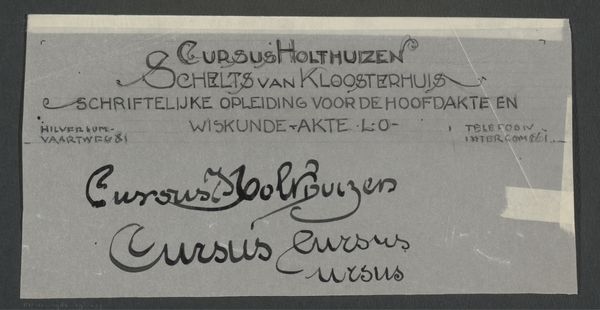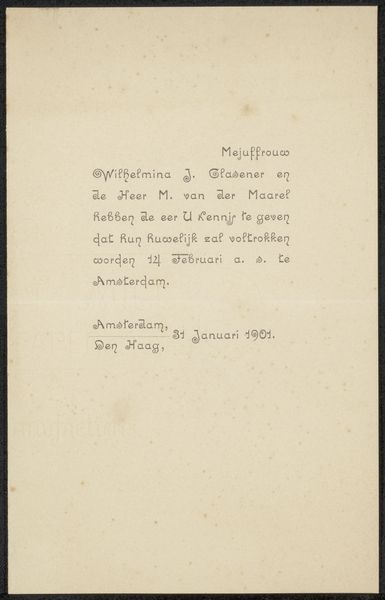
Bedankkaart aan Philip Zilcken en Henriette Wilhelmina van Baak Possibly 1915 - 1923
0:00
0:00
graphic-art, print, paper
#
graphic-art
# print
#
paper
#
paper medium
Copyright: Rijks Museum: Open Domain
Curator: It seems we are examining a 'Thank You Card to Philip Zilcken and Henriette Wilhelmina van Baak', possibly from 1915-1923, by S.J. Blaupot ten Cate, employing graphic art and print on paper. Editor: That’s right. It’s such a simple card, yet it speaks volumes. It's fundamentally an acknowledgement of condolences following a bereavement. What stands out to you in this seemingly simple piece? Curator: I see this not just as a simple card but as a reflection of social conventions and class structures of the early 20th century. The formality of the language and the printed format point towards a society deeply entrenched in ritualized responses to death. Who were these figures mentioned, and what does their involvement as 'executors-testamentair' suggest about their societal position? This card is a tiny keyhole into a specific social strata, their values, and how they navigated grief. How does that affect your understanding of its purpose? Editor: I guess I hadn't thought about how the card performs social roles. It's not just expressing thanks, but maintaining a certain public image, isn't it? That phrase "namens de familie"—on behalf of the family—speaks to that. It is the language of a certain bourgeois identity formation. Curator: Precisely! And considering the historical period – potentially during or just after the First World War – such formalities might also serve as a form of maintaining normalcy amidst chaos and uncertainty. This seemingly mundane object carries the weight of societal expectations, grief management, and perhaps even silent anxieties of its time. Does looking at it from this point of view shift the meaning of it in your eyes? Editor: It completely reframes it. I had viewed it as a simple gesture, but I now appreciate its depth as a cultural artifact that offers interesting insights. I’ll certainly look at similar objects differently going forward! Curator: Exactly, context transforms the object, enriching its inherent value as something more than initially apparent.
Comments
No comments
Be the first to comment and join the conversation on the ultimate creative platform.
